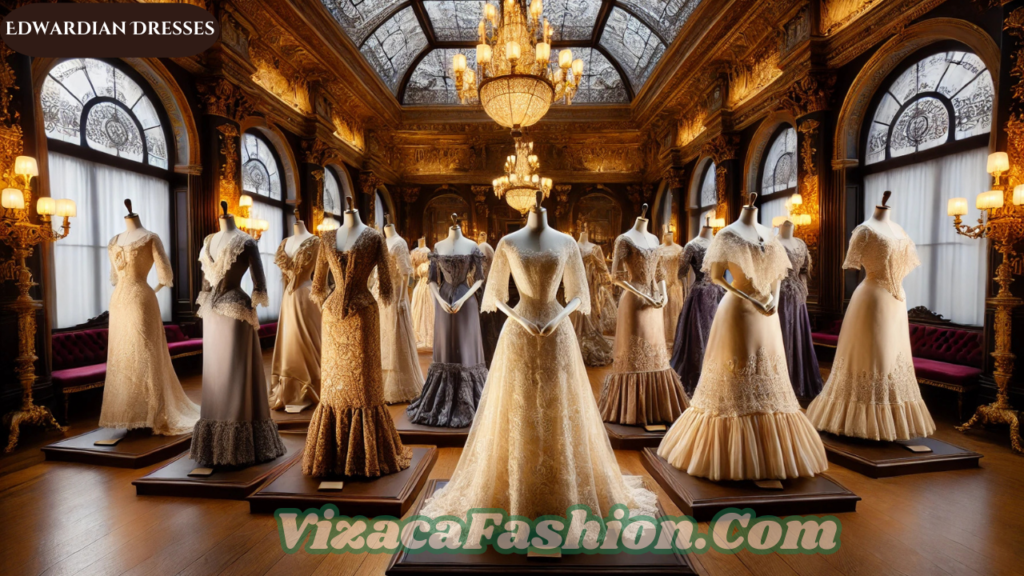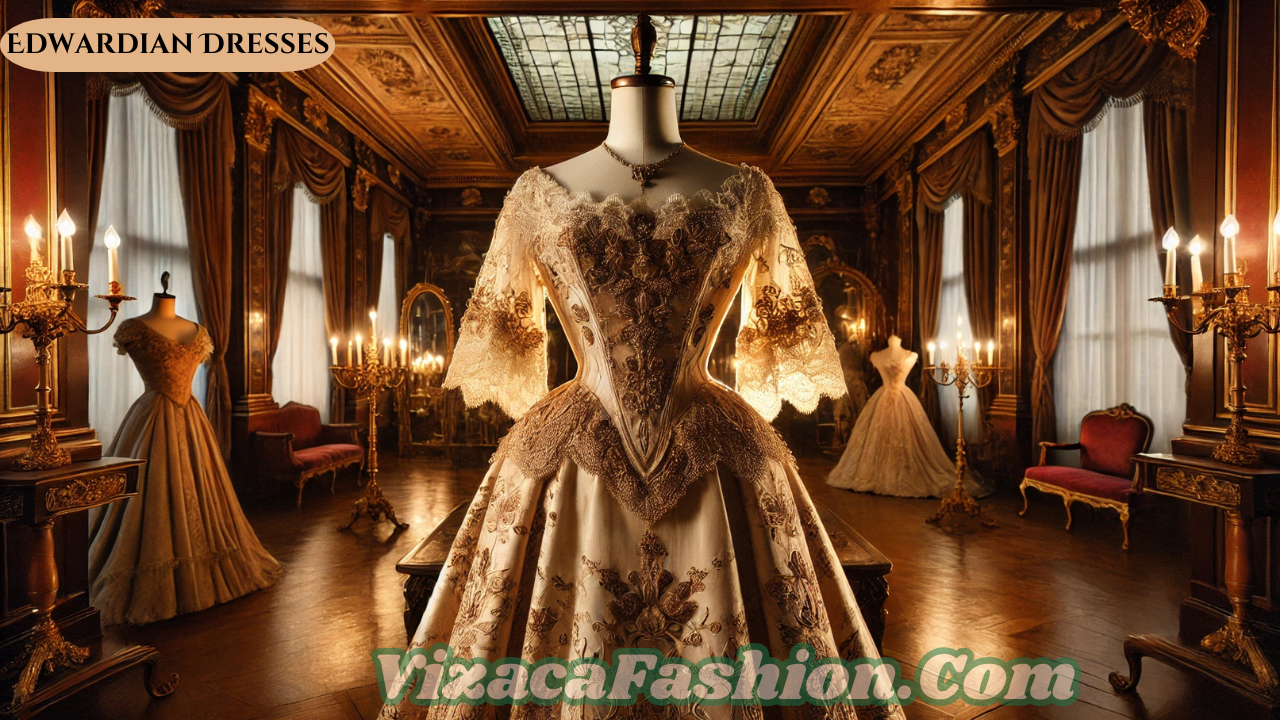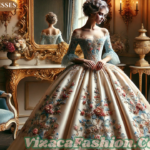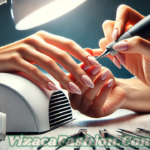Edwardian dresses are a fascinating chapter in the history of fashion, showcasing an era of sophistication, elegance, and intricate craftsmanship. Spanning from 1901 to 1910, the Edwardian period coincided with the reign of King Edward VII in Britain, a time that emphasized luxury, class, and refined tastes. Let’s dive deep into the world of Edwardian dresses to uncover their distinctive features, cultural significance, and lasting impact on modern fashion.
The Historical Context of Edwardian Dresses
The Edwardian era marked a shift from the rigid Victorian styles to more fluid, graceful, and opulent designs. This period, often referred to as the “Belle Époque,” reflected the optimism and prosperity of the early 20th century. Edwardian dresses were designed to celebrate the natural beauty and femininity of women, emphasizing an hourglass silhouette and luxurious fabrics.
During this time, fashion was heavily influenced by societal norms. Women’s clothing became a symbol of status, and Edwardian dresses, with their elaborate detailing and fine materials, were a testament to the wearer’s social standing.
Key Features of Edwardian Dresses
1. The S-Bend Corset
One of the most defining elements of Edwardian fashion was the S-bend corset, also known as the “health corset.” Unlike its Victorian counterpart, which cinched the waist tightly, the S-bend corset pushed the hips backward and the chest forward, creating an exaggerated hourglass figure. This silhouette was considered the epitome of femininity during the era.
2. High Necklines and Lace Accents
Edwardian dresses often featured high necklines, especially for daytime wear. These necklines were frequently adorned with lace, embroidery, or delicate ruffles, adding a touch of elegance and refinement. Evening gowns, however, allowed for more daring designs, with lower necklines and intricate beadwork.
3. Luxurious Fabrics and Embellishments
Silk, satin, and taffeta were the fabrics of choice for Edwardian dresses, symbolizing wealth and sophistication. These materials were often embellished with lace, pearls, and intricate embroidery, showcasing the era’s attention to detail. The use of lightweight fabrics also allowed for more movement, a departure from the heavier Victorian garments.
4. Flowing Skirts and Trains
Skirts during the Edwardian period were long and flowing, often featuring soft pleats or layers. For formal occasions, dresses were designed with dramatic trains that added grandeur and elegance. This design choice highlighted the natural grace of movement and reflected the romantic ideals of the time.
5. Sleeves and Accessories
Sleeves were another important feature of Edwardian dresses. Puff sleeves and bishop sleeves were particularly popular, adding volume and drama to the overall look. Accessories such as wide-brimmed hats adorned with feathers, gloves, and parasols complemented the outfits, completing the sophisticated Edwardian ensemble.
The Influence of Social Movements on Edwardian Fashion

The Edwardian period was a time of significant social and cultural change. The women’s suffrage movement gained momentum during this era, and this shift in societal attitudes influenced fashion as well. While traditional Edwardian dresses remained popular among the upper class, practical and simpler designs began to emerge, catering to the growing number of working women.
The rise of the “Gibson Girl,” a popular illustration by Charles Dana Gibson, epitomized the ideal Edwardian woman. The Gibson Girl was independent, confident, and stylish, often depicted in elegant, tailored Edwardian dresses that balanced femininity with practicality.
Edwardian Dresses for Different Occasions
1. Daywear
Daywear in the Edwardian era was modest and practical, with high necklines, long sleeves, and ankle-length skirts. Shirtwaist blouses paired with skirts became a popular choice for middle-class women, reflecting a blend of simplicity and style.
2. Evening Wear
Evening gowns were the epitome of Edwardian elegance. These dresses featured luxurious fabrics, intricate embellishments, and daring silhouettes, with low necklines and fitted bodices. Evening wear was often paired with gloves, jewelry, and shawls to complete the look.
3. Wedding Dresses
Edwardian wedding dresses were a celebration of romance and opulence. These gowns were typically made of silk or satin, adorned with lace and delicate embroidery. Long trains and veils added an ethereal touch, creating a timeless look that continues to inspire bridal fashion today.
The Legacy of Edwardian Dresses in Modern Fashion
Edwardian dresses have left an indelible mark on modern fashion. Designers often draw inspiration from the intricate detailing, feminine silhouettes, and luxurious fabrics of this era. Vintage-inspired collections and period dramas have also contributed to the enduring appeal of Edwardian style.
From high-fashion runways to bridal collections, the influence of Edwardian dresses is evident. The emphasis on elegance, craftsmanship, and timeless beauty continues to resonate with contemporary audiences, making Edwardian-inspired designs a staple in modern wardrobes.
How to Incorporate Edwardian Style into Today’s Fashion
For those who admire the charm of Edwardian dresses, there are several ways to incorporate this timeless style into modern outfits:
- Choose Vintage-Inspired Pieces: Look for blouses, dresses, or skirts with lace accents, high necklines, or puff sleeves.
- Accessorize Thoughtfully: Add wide-brimmed hats, pearl necklaces, or gloves to your outfit for a touch of Edwardian elegance.
- Opt for Luxurious Fabrics: Incorporate silk, satin, or lace into your wardrobe to evoke the sophistication of the Edwardian era.
- Experiment with Silhouettes: Try A-line skirts or dresses that emphasize the waist, inspired by the hourglass silhouette of Edwardian fashion.
Conclusion
Edwardian dresses represent an era of unparalleled elegance and grace, reflecting the cultural and social dynamics of the early 20th century. With their intricate designs, luxurious fabrics, and timeless silhouettes, these dresses continue to inspire and captivate fashion enthusiasts around the world. Whether through vintage collections or modern adaptations, the spirit of Edwardian style lives on, proving that true elegance is never out of fashion.


